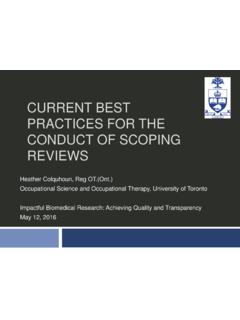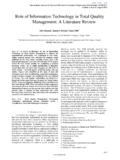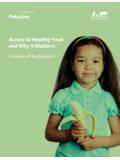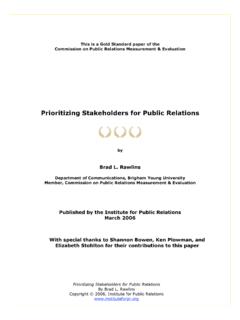Transcription of THE BENGALI DIASPORA IN BRITAIN: A REVIEW OF THE …
1 1 LSE 2010 1 THE BENGALI DIASPORA IN britain : A REVIEW OF THE literature By Claire Alexander, Shahzad Firoz and Naaz Rashid Section 1: Demographic profile Section 2: History of Migration Section 3: Identity: - Politics of community - Religion - Gender/Family - Generation/Youth Section 4: Policy Issues: - Education - Employment - Housing - Poverty - Health Section 1: Demographic Profile of the Bangladeshi Community in the UK According to the 2001 census, 283,063 people of Bangladeshi heritage were living in britain . This amounts to of the total population of the UK and of the ethnic minority population (unless otherwise stated, figures are based on data from the 2001 census). Of these, 154,000 people were born in Bangladesh (Kyambi 2005), which equates to of the British population (BBC, 2005). The following table shows the growth in the Bangladeshi population since the 1950s. Table 1: Estimates of the Bangladeshi Population in the UK 1951-2001 Year (census) Total Number of Population 1951 2000 1961 6,000 1971 22,000 1981 65,000 1991 163,000 Actual 2001 283,000 (Source: Peach, 2005.)
2 24) Age and Gender Profile The Bangladeshi population is an overwhelmingly young one, with a median age of 18 (compared to 37 for the White population) and almost 40% of the Bangladeshi population is under the age of 16. This was twice the figure for the White population more generally where only 19% were under the age of 16. Most Bangladeshis were within the 16 to 64 age group (ONS, 2002). The age structure of the newer Bangladeshi born immigrant community also followed the general trend with over ninety percent of that population aged under 45 (Kyambi 2005). The 2001 Census shows that nationally there is almost gender parity between the ages 15-29 (102:100), but many more men than women in the 30-44 age range (150:100) 2 LSE 2010 2(Samad & Eade 2002). However, this situation is reversed in Tower Hamlets where in the 26-35 age range there are more women than men (146:100). Two thirds of women marry between 20-24 and less than 10% of men and women marry before 20.
3 Rates of marriage are high (74%) (Samad & Eade 2002). Religion Latest figures show that Bangladeshis are Muslim, which is the highest percentage for a single religion within any ethnic group (Piggott 2004). Bangladeshi Muslims account for 17% of the total British Muslim community (DCLG 2009). In addition, of Bangladeshis in the UK are Hindu, Christian and % Buddhist. In the census, did not state their religion and said they did not follow any religion at all (Peach 2005). Geographical Location britain 's Bangladeshi communities are overwhelmingly concentrated in London. Of the total Bangladeshi population in the UK, 54% lived in the Greater London area and 46% in the rest of the UK (Eade & Garbin, 2005: 5). Figure1: Bangladeshi Population of in the UK. (Source: Piggott 2004) The Bangladeshi population is the most geographically concentrated of all ethnic groups in London (Piggott 2004). Bangladeshis made up of the total London population in 2001.
4 Within London, Bangladeshis were concentrated in the East End with most of them living in a single borough, Tower Hamlets (ibid). The borough has been termed, by Eade and Garbin, as the centre of the UK Bangladeshi population where 65,553 individuals or of the Bangladeshi population lived (Eade and Garbin 2005). Bangladeshis account for 33 % of the total population of Tower Hamlets. Other London boroughs with high percentages of Bangladeshis are Newham and Camden with 9% and 6% respectively (Piggott 2004: 14). In addition, large numbers are also living in Westminster, Islington, and Southwark (Eade and Garbin 2005). 3 LSE 2010 3 Outside of London, there is a large population of Bangladeshis in Birmingham. In 2001, there were 20,836 Bangladeshis living across Birmingham, comprising 2% of city s population. At the same time there were 9,817 Bangladeshis living in Oldham, Greater Manchester which accounted for of that city s population.
5 In addition there are 7,642 Bangladeshis in Luton and 4,967 in Bradford. There were also a small number of Bangladeshis in Scotland and Wales (Eade and Garbin 2005, IMO 2006:15). Of the Bangladeshis in the UK who were born in Bangladesh, 84,500 or nearly fifty-five percent were living in London; 48,000 were to be found in the East London boroughs of Tower Hamlets, Newham and Hackney, and a further 6,000 in Camden in North London (Kyambi 2005: 76). This means that 1% of London's residents were born in Bangladesh one of the few countries of birth to reach this percentage (BBC, 2005). Outside London there were 15,000 Bangladeshi born people in Birmingham and 10,000 in Greater Manchester. 4,288 Bangladeshi-born people were found in Oldham making it the most popular borough outside of London (BBC, 2005). Map 1: Geographical Spread of the Bangladeshi Community in the UK, 2006 (Source: IOM, 2006: 16) Some Socio-Economic Characteristics of the Bangladeshi Community Bangladeshis in britain are a relatively young population and are experiencing a range of socio-economic problems (Garbin 2005: 1).
6 They are, in general terms, ..poor, badly housed and poorly educated, suffer a high level of male unemployment and have a very low female participation rate in the labour market (Peach 2005: 23). Housing/Household size 4 LSE 2010 4In 2002, Bangladeshi households were the largest in the UK with an average of members (ONS, 2002). In London, however, the average number of Bangladeshis per household has decreased from in 1991 to in 2001 and the percentage of Bangladeshi households containing more than six people has also decreased from 47% to 30%. Statistics show that 30% of Bangladeshi households are likely to live in officially recognised non decent homes (HMSO 2005). According to the 2001 Census the proportion of Bangladeshis in Greater London who lived in overcrowded housing was almost three times higher than the average, and only 8% of Bangladeshi households were single person households. In 1996, Eade, Vamplew & Peach noted that 19% of Bangladeshi households lived at the highest tabulated density category (over persons per room), compared to of the total resident population.
7 The percentage of Bangladeshi households with two or more dependent children was 57 % which was more than three times the national average of 17% and significantly higher than for any other ethnic group in London (Piggott 2004). 88% of Bangladeshi couples have children (compared with 49% of white couples) and over 42% have 4 or more children (the equivalent figure for whites is 4%) (Ahmed et al 2001). Only 38% of Bangladeshis own their own homes nationally (Peach 2005) and the majority of households live in social sector rented accommodation (63%). The majority of Bangladeshis (55%) live in purpose built blocks of flats compared with 33% on average for the wider population (ibid). Poverty Bangladeshis have the highest rate of income poverty out of all ethnic minorities with 65% living below the poverty line. Even amongst working families, around 60% of Bangladeshis were in income poverty. This was much higher than the equivalent figures (between 10-15%) for White British, White Others, Indians and Black Caribbeans (Kenway and Palmer 2007).
8 Bangladeshi households were the least likely to obtain income from earnings, reflecting their higher unemployment rates. Wages and salaries made up just over a third (36%) of their total earnings. Social security benefits and pensions made up 19% and 5% respectively of household income (FRS 2000/2001). Two thirds of Bangladeshi children are growing up in poverty (three times the national average). Zorlu s (2001) study showed the average net weekly pay of Bangladeshis and Pakistanis as , compared to for whites. Remittances to Bangladesh have historically been an important feature of many households although this trend is now in decline. During the 1960s and 1970s, around 85% of families remitted their savings, whereas in 1995, this had decreased to 20% (Garbin 2004, Eade & Garbin 2005). Eade & Garbin suggest this is due to: the costs of living in the UK, the process of family reunion (whereby households are now established in britain rather than Bangladesh) and the potential for family conflict (over land, for example) in Bangladesh.
9 They also suggest that second and third generation Bangladeshis feel less of a commitment to their homeland in terms of providing material resources. Health Bangladeshis, across all age groups, experience a much poorer level of health than average (ONS 2002). Bangladeshi men and women were three or four times more likely than the general population to rate their health as bad or very bad . The average 5 LSE 2010 5proportion reporting their health as not good is Among Bangladeshi men this figure is (ibid). Based on data from 1999, Bangladeshi men were the ethnic group who were most likely to smoke cigarettes (44%). On the other hand, very few Bangladeshi women did so, although a significant proportion (26%) chewed tobacco. Amongst women aged 50-74, this figure rose to 92% (HEA 2000).This method of using tobacco was also popular among Bangladeshi men (19%), but they tended to use it in conjunction with cigarettes (Department of Health 1999).
10 Employment Bangladeshis have one of the lowest economic activity rates among both men ( %) and women ( %). The percentages of economically inactive male and females among Bangladeshis are and respectively (ONS 2005). Bangladeshi men had the highest unemployment rate at 20% four times that for white men. Bangladeshi women had the highest unemployment rate at 24%, six times greater than that for white women (4%) (ONS 2002)1. Bangladeshis also had the highest percentages of never worked or long-term unemployed of all ethnic groups ( compared to % of all people) (Peach 2005). A high proportion of Bangladeshis work in Hotels and Catering (65%), which is six times the average for Greater London. Bangladeshis are also six times more likely than average to work in textiles or in occupations associated with printing (Piggott 2004). Self-employment is a popular route out of unemployment for a large section of the community.







